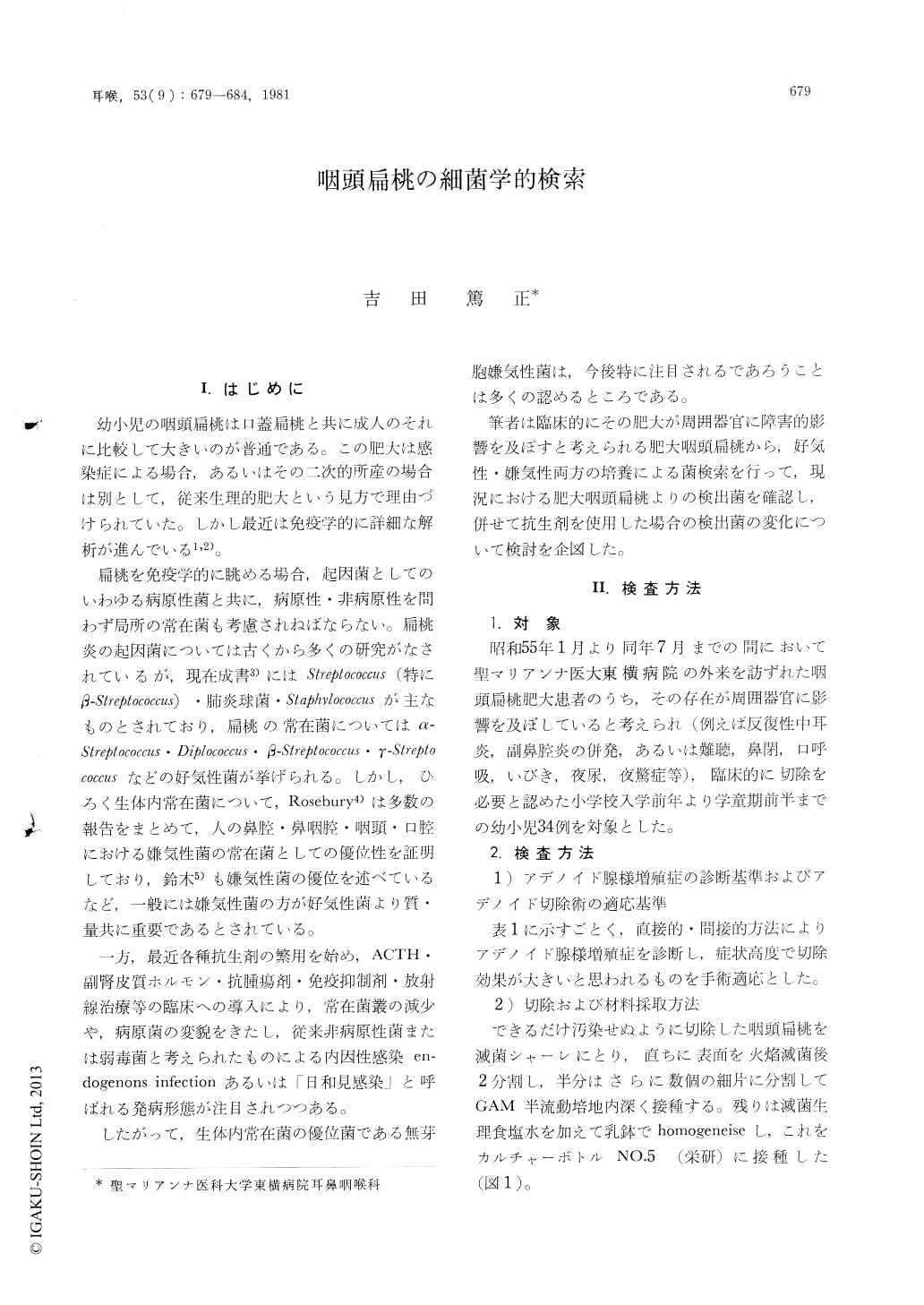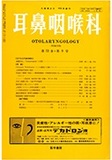Japanese
English
- 有料閲覧
- Abstract 文献概要
- 1ページ目 Look Inside
I.はじめに
幼小児の咽頭扁桃は口蓋扁桃と共に成人のそれに比較して大きいのが普通である。この肥大は感染症による場合,あるいはその二次的所産の場合は別として,従来生理的肥大という見方で理由づけられていた。しかし最近は免疫学的に詳細な解析が進んでいる1,2)。
扁桃を免疫学的に眺める場合,起因菌としてのいわゆる病原性菌と共に,病原性・非病原性を問わず局所の常在菌も考慮されねばならない。扁桃炎の起因菌については古くから多くの研究がなされているが,現在成書3)にはStreptococcus(特にβ-Streptococctts)・肺炎球菌・Staphylococcusが主なものとされており,扁桃の常在菌についてはα-Streptococcus・Diplococclts・β-Streptococcus・γ-Streptococcusなどの好気性菌が挙げられる。しかし,ひろく生体内常在菌について,Rosebury4)は多数の報告をまとめて,人の鼻腔・鼻咽腔・咽頭・口腔における嫌気性菌の常在菌としての優位性を証明しており,鈴木5)も嫌気性菌の優位を述べているなど,一般には嫌気性菌の方が好気性菌より質・量共に重要であるとされている。
Few reports on relationship between the anaerobic bacteria and infection of the pharyngealy tonsils have been published in Japan.
Aerobic and anaerobic bacteria in 34 pharyngeal tonsils, which were removed because of hypertrophy, were studied. The results were as follows: 1) Alpha-Streptococcus, Neiseria and Staphylococcus aureus were isolated in most instances. 2) Alpha-Streptococcus and Staphylococcus aureus were less frequently, and Neiseria was more frequently isolated in a group received preoperative antibiotics than in a group received no antibiotics within one month before operation. 3) Isolated anaerobes were only 2 strains: Clostridium sp. and Bacteroides sp.

Copyright © 1981, Igaku-Shoin Ltd. All rights reserved.


